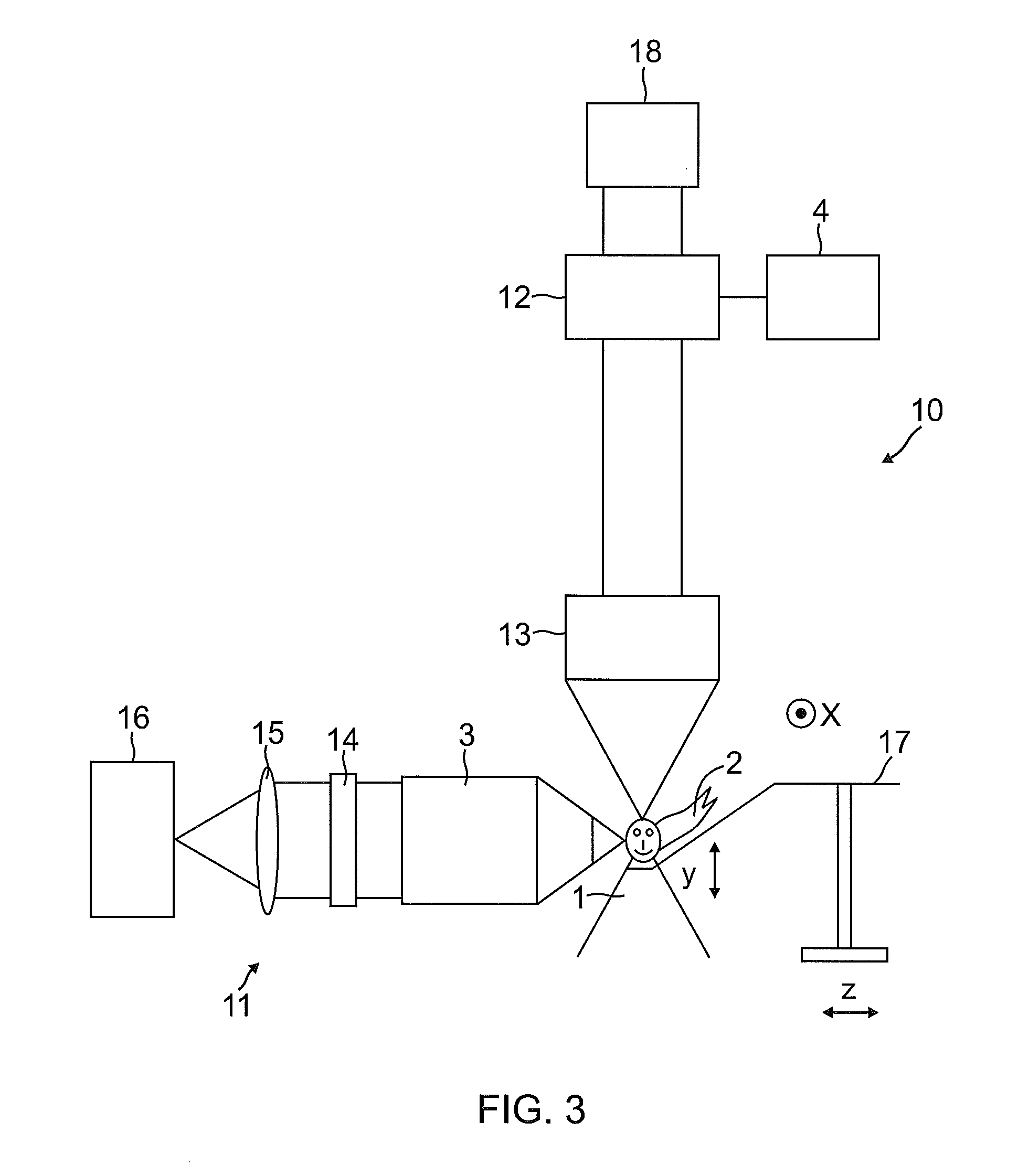SPIM microscope with a sequential light sheet
a light sheet and microscope technology, applied in the field of microscopes, can solve the problems of low optical resolution along the optical axis in the detection direction, unflexible system, and high thickness of illuminated volumes, and achieve the effects of increasing the flexibility of the microscope, detecting more image data, and high resolution
- Summary
- Abstract
- Description
- Claims
- Application Information
AI Technical Summary
Benefits of technology
Problems solved by technology
Method used
Image
Examples
Embodiment Construction
[0011]According to a preferred embodiment of the invention, a photodetector is provided detecting detection light sent from the object in the opposite direction of the y-direction as a second detection direction, the detection light being fluorescent light and / or reflected light. This generates a second data stream that can for instance be used in addition for generating an image confocally. This optional additional image can be switched on or off as desired.
[0012]When using multiphoton lasers, confocal detection as well as the non-descanning light path can be chosen for generating images by multiphoton detection. The non-descanning detection path has the advantage of providing a higher collection efficiency, specifically in case of thick samples. The term non-descanning should be understood as coupling out detection light directly at the detection objective.
[0013]If the SPIM detection beam path (in z-direction) is used for collecting the fluorescent light and the light is a directe...
PUM
 Login to View More
Login to View More Abstract
Description
Claims
Application Information
 Login to View More
Login to View More - R&D
- Intellectual Property
- Life Sciences
- Materials
- Tech Scout
- Unparalleled Data Quality
- Higher Quality Content
- 60% Fewer Hallucinations
Browse by: Latest US Patents, China's latest patents, Technical Efficacy Thesaurus, Application Domain, Technology Topic, Popular Technical Reports.
© 2025 PatSnap. All rights reserved.Legal|Privacy policy|Modern Slavery Act Transparency Statement|Sitemap|About US| Contact US: help@patsnap.com



